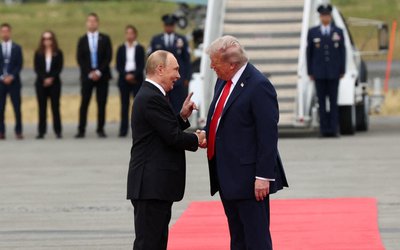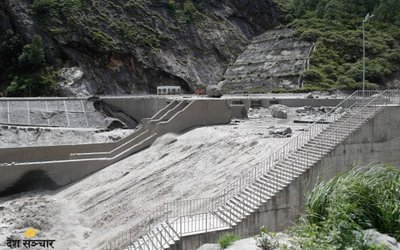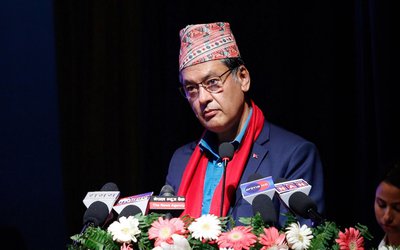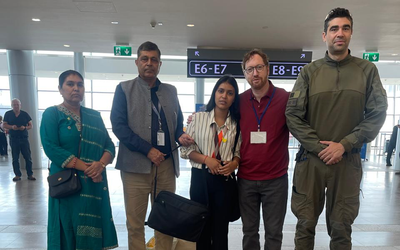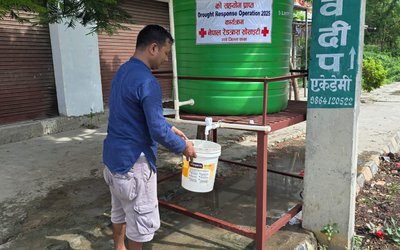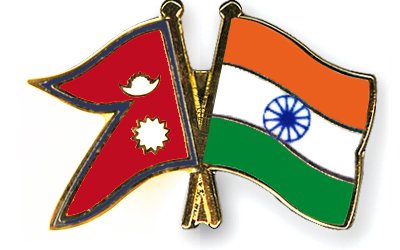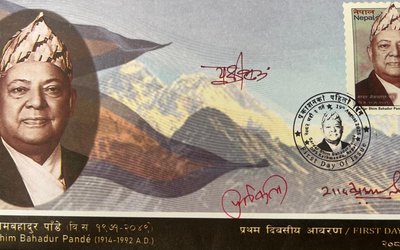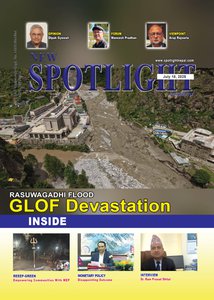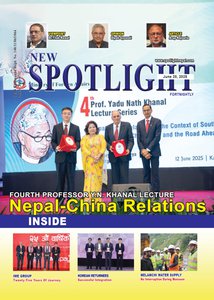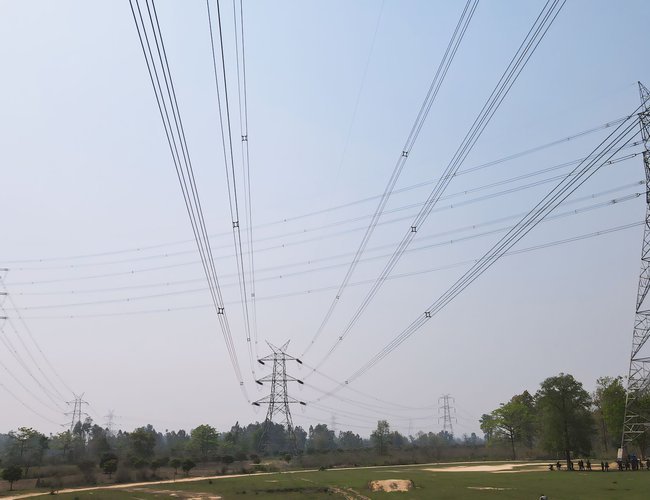
In addition to electricity import from India during the months of dry season, Nepal also buys fossil fuels in a substantial chunk of its energy needs. The energy mix of Nepal roughly consists of about 26 percent of the total energy consumed in a year. It’s so embarrassing to state that even around 7 percent of grid electricity that the country is consuming comes partly from India which combats its own problems to avoid mismatches between demand and supply after solar hours during Nepal’s power deficit months. India’s journey towards clean energy transition is, in itself, a huge challenge to grid stability owing to the intermittent nature of the variable energy sources and the requirement of the increasing ramping capability for system operation flexibility.
Private sector of Nepal continues its race in hydropower development relentlessly, but the Government policies associated with it flicker and shine less steadily, thereby diminishing the landscape of optimum outcome that could be. Nepal’s internal weakness to develop reservoir-based hydropower projects, despite huge advocacies and political proclamations uttering the voices for energy security, may ultimately drive Nepal to embrace long power cuts in future, making life worse than ever before given that power import embraces technical or geopolitical hurdles.
The implications of this prognosis are that economic chaos will be rampant and waving any nationalist cards will not work at that time since the widely loomingresentment caused by several factors including unemployment may spark public propensity to deliver a knockout blow to our entire political system. To avoid such perilsfor which soft sirens are already in progress, the Government needs to heed it without further delay, stop playing hypocrisy and be cautiously working out a pragmatic exit-strategy to secure energy future. With the national peak demand roughly in the range of 2,000-2,200 Megawatts and the total installed capacity of about 3,600 MW, Nepal is bound to combat two different situations: power surplus in wet season and power deficit in dry season, demanding the role of cross border power trading in both cases. However, the first one is relatively easy to resolve as Nepal and India have principally agreed that India will be importingNepal’s surplus power up to 10,000 MW in ten years on long-term basis. In this regard, Nepal needs to accomplish threemajor activities. The first one is building more and more hydropower projects of all types and generating power more than our domestic demand. The second one is developing robust transmission facilities for seamless power flow, and the third one is reaching out to the neighboring countries’ markets along with coherent policies igniting and supporting accelerated power sector reform coupled with a strong regulatory regime.
Nepal is a vulnerable country from energy security perspective. However, there are bright aspects, too. Nepal should not be scared of wet season surplus power, blaming Run-of-River (ROR) projects for this scenario. Yes, it is true that enough storage types of hydropower projects could overturn the case to some extent since we could have stored the water seasonally for dry season generation of electricity. However, we need to stand up with the reality which simply means a very limited storage capacity to the extent of 106 Megawatts from cascaded Kulekhani plants developed so far and one more project called Tanahu under construction with its installed capacity of 140 Megawatts. In fact, having considered this scenario, ROR and Peaking ROR hydropower projects being developed by various companies through long-term power purchase agreements with Nepal Electricity Authority (NEA) have really played amazing roles for fulfilling the domestic power needs of the country, seasonal power export, employment creation and contribution to local and national economies. The development of these projects has also paved the way for incredible capacity building and today it will not be an exaggeration to say that Nepali citizens have developed their own expertise in designing hydropower projects and providing all associated consulting services including environmental studies without having to search for foreign consultants as in the earlier days.
While arriving at this juncture with some success and some failures, let us appreciate the role of Government as a policy maker and conducive environment creator, the role of private sector as hydropower developersand the role of NEA as the electricity buyer without underminingany of them as it’s something like ‘symbiosis’ producing synergy for economic development spurred by hydropower production. Knowingly or unknowingly, a sort of feud sometimes unfolds, distancing the Government and the private sector from each other on some issues concerned with hydropower development. In fact, it should be avoided, corrected and aligned, if any. The courseand contours sketched beyond coherence will be not be only injurious but also disastrous to the national economy in general and to the entire power sector in particular. As such, let us give the private sector a big hand for becoming a beam of hope in Nepal’s electricity industry. The role given to it should be extended to transmission, distribution and trading of power, too, in the days to come, through properlegislations, policy setting and regulations.
With exceptions in the form of mid-term bilateral transactions with the entities of India and Bangladesh to some extent, Nepal has been mainly relying on India’s power exchange to sell its seasonal surplus of hydropower. That is why the power export has not been considered resilient as it involves repeating the approval process every year on project wise basis and the transaction in the day-ahead and real time markets of power exchanges undergo high price uncertainties. As such, the major chunk of exportable power should find commercial arrangements on long-term or medium-term bilateral basis, especially to avoid market uncertainties. As India isestablishing more and more big data centers which are highly energy-intensive and require stable sources of 24/7 reliable energy, Nepal’s surplus power can find a good market in India in the years to come to meet increasing power demands of such centers.
Besides the export portfolio available in the electricity value chain, the Government may pay special attention to explore other ways of consuming surplus ‘green’ energy in the form of hydropower within the country itself without further worries of consumption. Establishing data centers in Nepal by encouraging domestic and international investment may be one of them for channeling some of the surplus powerto cushion its fiscal blow as the country can be an excellent choice attributable toits strategic location between the world’s two largest economies favorable for data traffic routingand less expenses required in building cooling infrastructures. Data centers form ’clouds’ which store and process data for generating information. Nepal can learn from the example of Bhutan how it has been utilizing its green power and reducing export to India by establishing and expanding highly energy-intensive crypto currency industries. Bitcoin mining operations have changed the landscape of their electricity demand and supply without fully relying on the Indian market for the export of their wet season hydropower.
Worries about the future of power sector have flared in Nepal for long. Even after laws, policies, directives, roadmaps, executive orders and many others, Nepal’s power sector is not free of paradoxes. It is conspicuously full of contradictions, leaving several issues and aspects unresolved.In this context, stakeholders have played upthe need of the new electricity act which should be more liberal, more sector-friendly and more consistent with international trends in the present-day context. Despite skepticism, hopes are beaming for the parliamentary review and the earliest approval of its draft presented by the Government so that anomalies, if any, would beeffectively dealt with, filtered and trashed to the extent required.
For now, here is how the prevailing paradoxes have been clipping the power sector’s wings in Nepal’s context.
Hydropowerlicenses are issued by the Department of Electricity, butreluctances and restrictions are occasionally exhibited by NEA for signing power purchase agreement (PPA), albeit both as Government wings.
There is only a single entity in the country to sign PPA, but the budget puts forward take-and-Pay theory.
There are transmission constraints for seamless power flow to take place, but the transmission business is not open to the private sector.
We talk a lot about open access in transmission and distribution, but the associated infrastructures, albeit insufficient, are owned by an entity which is also the generator, transmitter, distributor and trader of power.
We are talking as ifjust the issuance of power trading licenses to the private sector would do wonders so that generators could sell power through them immediately.But we have not yet paid enough attention to power traders’ issues like where to sell power and how to sell power through them in the context that neither transmission capacity is enough in the country nor open access can work without institutional reforms.
Further, Hydropower Development Policy 2001 provisions that power export licensescan be categorically issued only for the projects above 100 MW of installed capacity, thereby confining the trade and consumption of electricity generated from the projects up to 100 MW to domestic level only.A power trader, as such, cannot havechoices for any distribution entities other than NEA to trade power in the current context.
Likewise,contradicting the provision of generation license for the term up to 50 years as per the Electricity Act 1992, the subsequent policy issued in 2001 restricted it to 35 years only in the case of anon-storage hydropower projectsupplying the internal demand and to a period further less by 5 years in the case of export-oriented non-storage ones. It is to be noted that Government of India’s Guidelines regarding cross border power trading requires each generation project to obtain the government permission individually to export the power it generates and the eligibility criteria as per India’s policy documents for power export from a project must be duly fulfilled.
Electricity Act 1992 does not mention power trading as a distinct licensed activity, but a power trading license has been issued to NEA-led power trading company and the private sector companies incorporated under the same company law for the same purpose are denied under the same Electricity Act.
Hydropower projects are generating surplus electricity in the wet season, and consequently Nepal has been earning significant revenue from its export, but there are advocacies among so-called nationalists that it should not happen.
Nepal is immensely rich in hydropower potential, but it has combatted the worst loadshedding in the past with the chances of its reoccurrence in future, still hovering, if not properly tackled in terms of increasing own generation and circumstantial failure for dry-season power import during deficit.
The consequences are clear. A big chunk of possibilities has gone amidst uncertainties. Nevertheless, we are not getting ready yet to embark on a promising journey in power sector without a fluster. Let us hope it will not be a long wait.
The author is a Senior Energy Expert and the former Deputy Managing Director of Nepal Electricity Authority.

Prabal Adhikari
Adhikari is an Energy Expert and the former Deputy Managing Director of Nepal Electricity Authority. He can be reached at prabaladhikary@gmail.com
- TOWARDS ENERGY & ECONOMY: Driving Nepal’s Energy Aspirations
- Jul 10, 2025
- FROM STATEHOOD TO REGIONHOOD: Expediting Nepal-Bangladesh Power Trade
- Jun 18, 2024
- FROM POLITICS TO GEOPOLITICS: The Echoes Of Electricity
- May 07, 2024
- WAKEUP CALL FOR NEPAL: Energy Security Splashing Shame On Water Resources
- Apr 03, 2024
- STRIFE IN NEPAL’S ENERGY SECTOR: Unlocking the Power of Hydropower
- Mar 28, 2024
